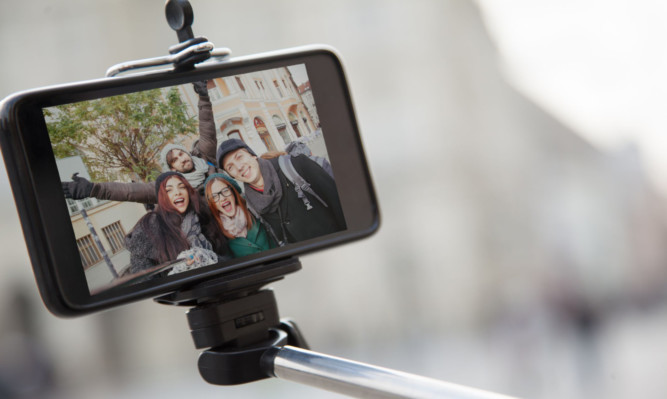
Selfie sticks have been banned by one of the UK’s leading art galleries – and other cultural venues could follow suit.
Visitors to the National Gallery will not be able to use the devices to take photographs of themselves.
The venue in Trafalgar Square, central London, has placed selfie sticks in the same category as tripods, which are already prohibited.
A spokeswoman said: “Photography is allowed for personal, non-commercial purposes in the National Gallery – however there are a few exceptions in order to protect paintings, copyright of loans, individual privacy and the overall visitor experience. Therefore the use of flash and tripods is not permitted.
“Our gallery assistants and visitor-facing staff are fully briefed and instructed to ensure we are striking the correct balance between visitor experience and the security and safety of works on display.
“Therefore they will use their discretion on a case-by-case basis in preventing photography which puts the safety of the collection at risk or obstructs other visitors.”
Visitors to the gallery generally backed the ban.
Morny Davison, who was waiting for the Inventing Impressionism exhibition to open, said: “It is an interference in what one hopes is a reasonably calm experience looking at great pictures.”
Another woman, who did not wish to be named, said art lovers would be “thrilled” by the ban.
“It’s becoming impossible to see pictures,” she said. “First there’s people with cameras then there’s cameras with sticks. They should have been banned some time ago.”
Art critic Brian Sewell called the gadgets “absurd” and welcomed the move.
“Anyone who actually wants to go and see a painting can’t because people are too busy taking photos,” he told The Times.
Following the National Gallery’s move, other destinations have been tipped to take similar measures.
The British Museum, outside which several selfie stick enthusiasts could be seen today, confirmed it is reviewing its policy on them.
A spokeswoman said: “Visitors to the British Museum are permitted to take photographs in public areas, not including temporary exhibitions, for non-commercial purposes.
“The museum is currently reviewing its policy on the use of selfie sticks and other apparatus within the museum grounds.
“The safety of objects and visitors is paramount to the British Museum and staff will politely inform visitors if the use of any equipment is endangering objects or other people on site.”
Selfie sticks are currently allowed at the National Portrait Gallery, although a spokesman said that “anything that may prove disruptive is reviewed on an ongoing basis”.
He said: “It is important that all our visitors enjoy their experience at the Gallery.”
Bill Doig, 76, said he had not seen anyone using selfie sticks during a visit to the National Portrait Gallery.
The retired doctor, from Glasgow, said: “The idea of people going round taking photographs at the rate they do now…they don’t look at any of the objects.
“If you go into an exhibition, surely the purpose is to see what is on show and not to take umpteen photographs of yourself?”
All is not lost for selfie enthusiasts, however – they can still snap themselves at the Natural History Museum.
“We do not currently see a need to alter our stance on this issue,” a spokesman said. “We do not currently ban the use of selfie sticks.”
They have drawn disapproval from traditionalists but selfie sticks have proved immensely popular, with Amazon reporting that sales rose by 301% in the three months September-November.
Boris Johnson, Beyonce and Barack Obama – who used one during a video promotion at the White House – are among those seen with the devices.
However, they have met increasing resistance in recent months.
Tottenham Hotspur banned selfie sticks from White Hart Lane after a complaint from a fan, while they have also been barred at a number of galleries and museums in the US and France.

Enjoy the convenience of having The Sunday Post delivered as a digital ePaper straight to your smartphone, tablet or computer.
Subscribe for only £5.49 a month and enjoy all the benefits of the printed paper as a digital replica.
Subscribe